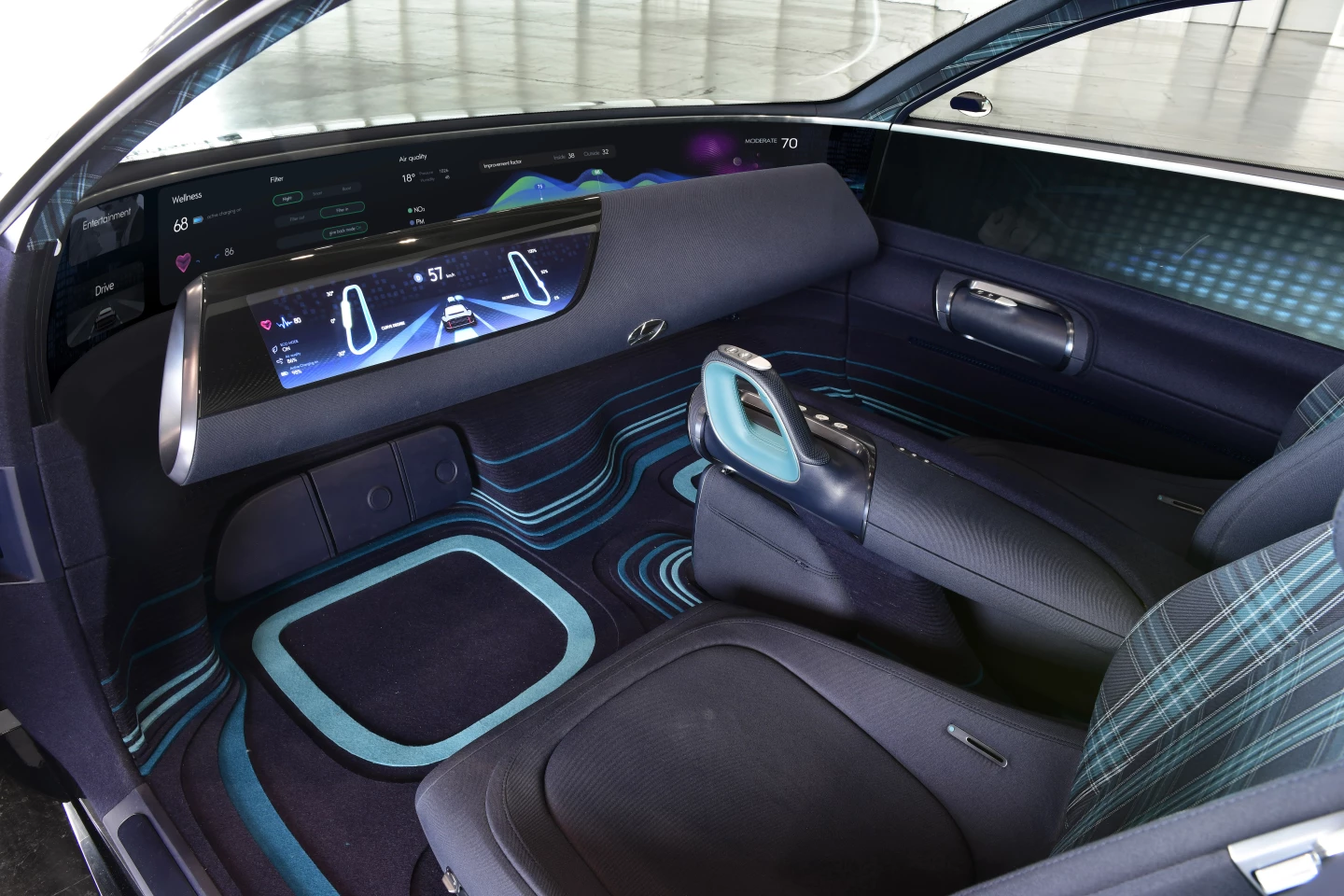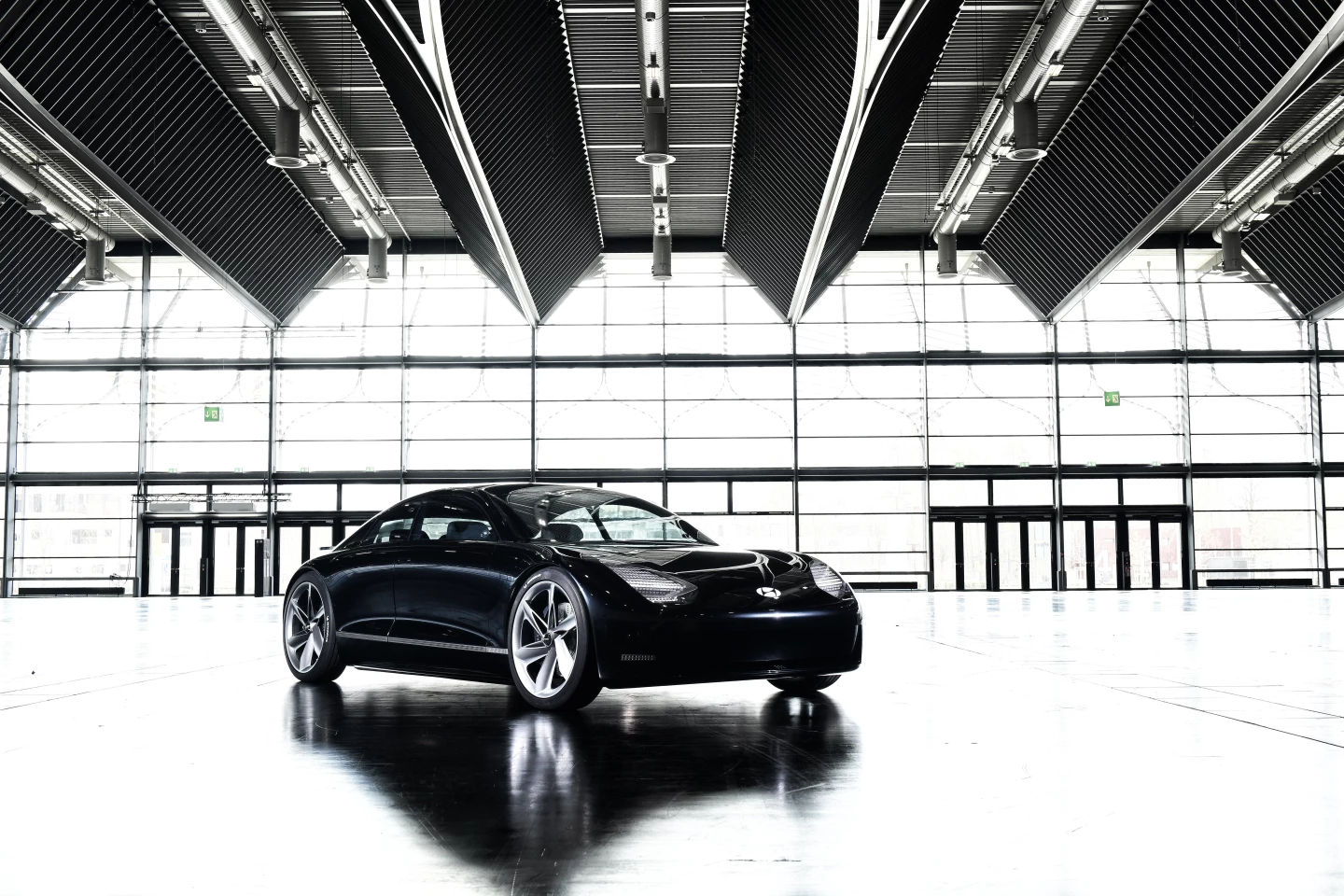We saw the renders last month, and now, since there are no auto shows to roll it out at, Hyundai has made an online debut for its rather charming Prophecy concept. Styled to echo the Art Deco era, it foresees a world where joysticks replace the steering wheel as your primary driver to car interface.
It's not so far-fetched; with the advent of cars that can park and drive themselves, however limited these functions may be, comes fully electronic control of the steering apparatus. Sure, there's a steering wheel there now, but it integrates with a complex steer-by-wire system in the same way that your accelerator pedal interfaces with a drive-by-wire system.
If the steering is electronic, then there's no particular reason why you need a steering wheel as opposed to any other form of input. Perhaps a set of joysticks might prove more intuitive – at least, to a new generation of drivers who haven't grown up with wheels.

In the Prophecy concept, there are left and right hand controls built into the door and center console. They allow for a very relaxed shoulder position as you drive. They don't obscure your dashboard the way a wheel does, leaving room for more information on the displays, and "90 percent of the car's functions" can be controlled through buttons on the joysticks, reducing your need to take your hands off.
How the joysticks would work? That's a bit of a mystery. Since there are two, you'd have to expect them to be somehow connected. Is there some sort of haptic feedback? Is the steering rate affected by speed? Do you push forward to accelerate and pull back to brake? Who knows? It's certainly interesting to think about how that little interface might work.
The dash is mounted on a swivel and has a teardrop cross-section much like an aircraft wing. Behind it, the infotainment screen stretches from one side of the car to the other. The Prophecy doesn't foretell a completely driverless world, but it certainly expects the car to be doing the work some of the time. Thus, entertainment is a priority.

So is comfort, with seats that can be adjusted manually, or through a Smart Posture Care System that asks for your height, seated height and weight, and adjusts your seats, mirrors and heads-up displays to what it thinks you need based on "medically verified information." Putting the Prophecy in "Relax" mode, assuming you're not driving, flips the wing-shaped dash up, reclines your seats and lets you kick back to enjoy a show.
You can't open the windows on this thing. Hyundai feels the only reason you'd do so is to get a breath of fresh air, which is redundant since the Prophecy has an air filtration system with particle sensors built in. The car will continue to filter air even when it's parked – and indeed even when the air within is deemed clean, effectively cleaning the outside air as well. Bit of a drop in the bucket if you park it in Beijing, but then it might help keep you breathing easy in your garage.
As for the exterior design, well, above you'll find a new video of Hyundai's Chief Design Officer Luc Donckerwolke talking you through his thinking. The chief inspirations are the cars of the 1920s and 30s - the Art Deco era of curvaceous, smooth forms. But since you can have too much of a good thing, says Donckerwolke, the design team broke up the smoothness with some seriously blocky pixelated taillights and headlights. Contrast in all things.
As for the powertrain and chassis, Hyundai merely says it'll be built on the company's Electric Global Modular Platform, or E-GMP. Thus, batteries will be in the floor, and the powertrain will be very compact, opening up lots of room in the cabin and flattening the floor as it runs up the middle of the car.
All in all, the Prophecy is a nice-looking car with some interesting ideas to chew on. It remains to be seen how many of these ideas make it through to production cars. See a presentation on the interior below.
Source: Hyundai














